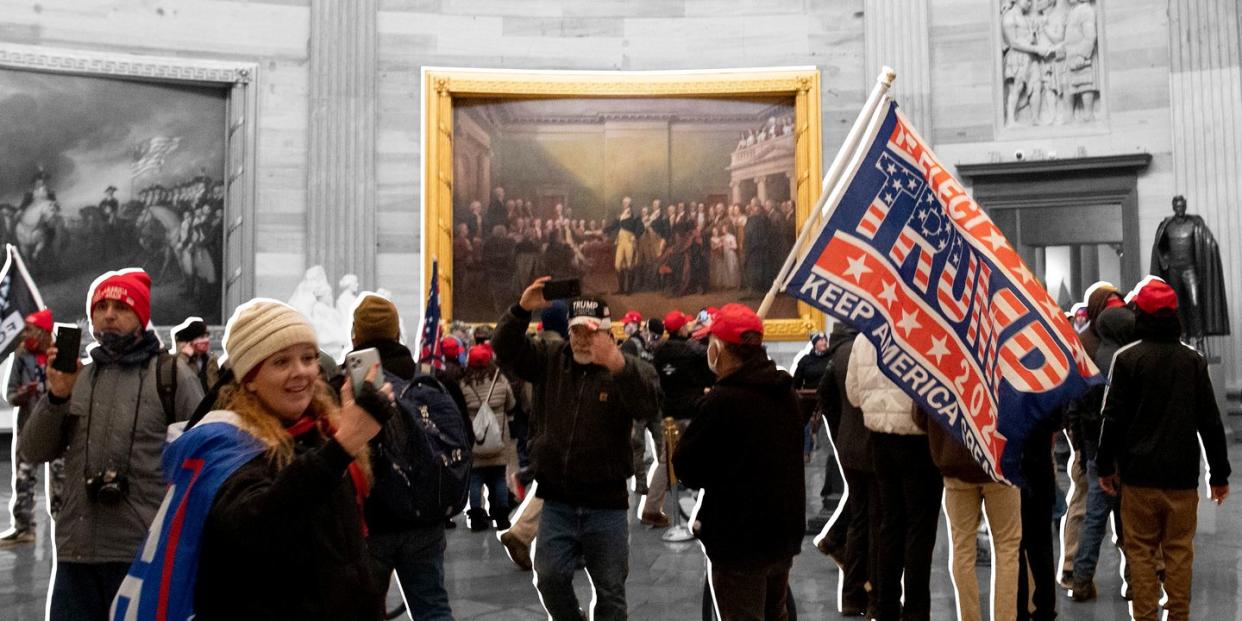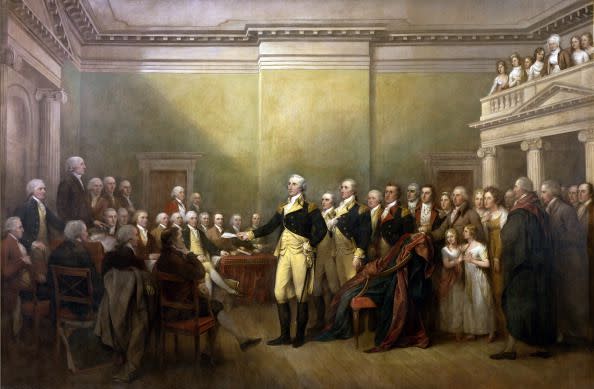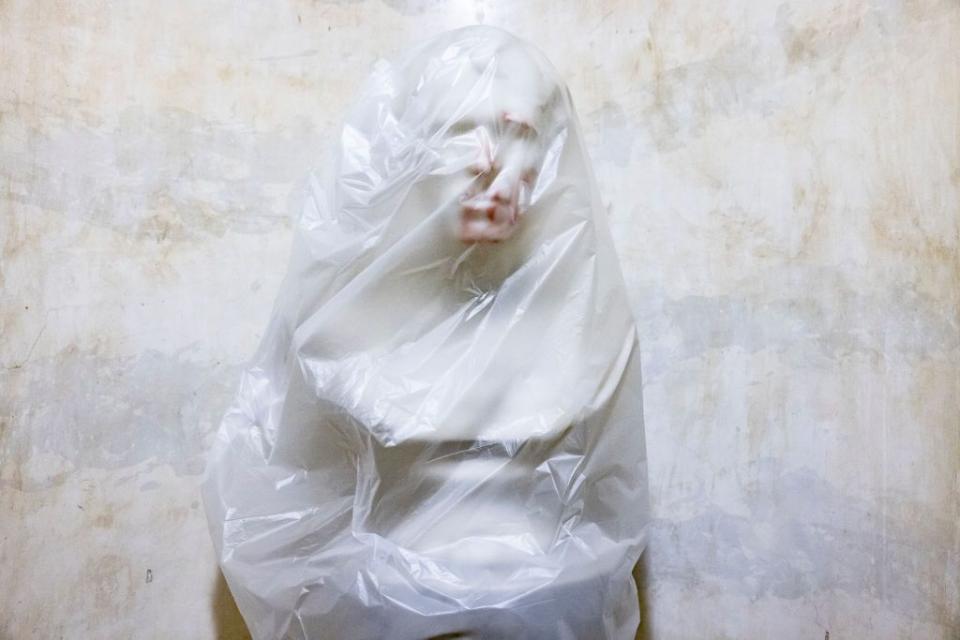George Washington's Legacy Alone Was Enough to Guarantee a Peaceful Transfer of Presidential Power—Until Now

- Oops!Something went wrong.Please try again later.
- Oops!Something went wrong.Please try again later.
Since 2016, I have received the same question from journalists and news anchors, friends and family, over and over again: Is there a precedent for this? I can’t recall a time that I, a presidential historian, answered, “yes,” but I can recall feeling as if there was never enough time or hunger for more than a sound bite and suggested reading. But yesterday, as we watched a sitting president incite violence in the nation’s capital, I was overwhelmed by how little people seemed to understand that we were watching more than the conclusion of a 233-year tradition.
The peaceful transfer of power isn’t some ritual. It defined us as a country, and while America sparked an age of revolution, it emerged as the only comparatively stable republic. The French executed their monarch, devolved into violence, and a decade later, installed an emperor. We, on the other hand, were led by George Washington, the man who wanted, after the war was won, anything but power.
“Next to Washington, they all look small,” a fictionalized King George III sang in Hamilton—a sentiment that was shared by the real life monarchs, despots, and military dictators of the 18th century. “They wanted me to be another Washington,” Napoleon Bonaparte complained on his deathbed, after being dethroned twice. From the moment the Declaration of Independence was announced, George Washington, a 44-year-old Virginian, made them all look bad.

Appointed General of the largely inexperienced, ill-equipped Continental Army and tasked with defeating one of the greatest military powers in the world, Washington stuffed himself into a uniform he’d last worn at 27 when he retired from the Virginia militia, bought a couple of books on battlefield strategy and, with a lot of help from the French in the final hour, did the unthinkable. As Benjamin Franklin famously said to the British, Washington “sent home to you, one after another, five of your best generals, baffled, their Heads bare of Laurels, disgraced even in the opinion of his employers.” And the world.
Washington waged two wars during the Revolution: One with arms, and one with public opinion. By insisting that the Continental Army follow the rules of war when the British refused to do the same (they argued it was a rebellion, not a revolution) Washington showed the world that America was born a stable nation, based on a set of principles, and ready to claim its place in the world.
Victory at Yorktown won the war, but what Washington did next secured the hard-won independence. History was full of cautionary tales in which military commanders, from Julius Caesar to Oliver Cromwell, seized political power during revolution, transition, and instability. But Washington made it very clear to Congress that he wanted to transfer power as soon as possible. “It is essential for me to know their pleasure, and in what manner will be most proper to offer my resignation,” Washington badgered Thomas Mifflin, president of the Continental Congress, offering to write a letter or perform a public display or anything they wanted that would prove to be undeniable evidence that America was a republic.

As Christmas neared, Congress sent Washington careful stage directions, which he followed to the letter on December 23, 1783, in service to the nation politicians would now run. (The scene was famously immortalized in a painting by John Trumbull, which was visible in the background of photos of insurrectionists storming the capital building yesterday.) “If he does that,” King George III reportedly said in disbelief of Washington's resigning of his commission, “he will be the greatest man in the world.”
That’s exactly how Washington wanted to be remembered, “having happily assisted in bringing the ship to port,” he wrote to John Jay in 1786. Sure, he was distressed at news taxes went uncollected and foreign debts unpaid because the North and South couldn’t agree on the powers of a central government. “From the high ground on which we stood,” he lamented, “from the plain path which invited our footsteps, to be so fallen!”
But he didn’t budge. Washington intended to remain at Mount Vernon, where he lived with his family and the hundreds of people they enslaved, for the rest of his life. He’d slept in 280 beds during the war, and he hoped his own would be the last. “It is not my business to embark again on a sea of troubles,” he insisted. The America they fought for was supposed to be greater than one man, and its survival depended on it.
Washington is often described as the father of the nation, but over time, I’ve come to think of him more as its mother. He’d carried America to term, but he needed to stick around until, at the very least, it was eating solid foods. The delegates of the Constitutional Convention thought so, and spent months imploring him to join them; upon arrival, they unanimously elected him to be the convention’s president, confident they could work together under his leadership. He obliged, settling into a wooden chair on an elevated platform as the men debated issues, only speaking up when delegates became too heated, and even then, he needed to do little more than remind them of his presence. When it came time to sign the Constitution, he was first in line, and likely the first to head home.
Not so fast, the founders said. By showing up, Alexander Hamilton argued, Washington “pledged to take part in the execution of the government.” They’d agreed on one executive versus three, and not much else about the presidency, because they assumed they were looking at the man who would fill the role, and could be trusted to figure it out along the way. Surely he’d help steady the government as it learned to walk. At 56, it was the last thing Washington, and most certainly his wife, wanted, yet it seemed as if the choice was not truly theirs to make. Washington called the presidency “the place of his execution.” The country might benefit, but he had everything to lose.
The next eight years proved him right. By his second term, Washington had avoided international conflicts, created the cabinet, oversaw the establishment of a central bank, and set other precedents future leaders would follow, with few exceptions, but he also made a series of blunders. He was no longer immune to criticism, and estranged from most of the founders, including Thomas Jefferson and James Madison, which convinced him the country no longer needed his service.
The Constitution had not limited the number of terms he could serve, but rather delimited the terms to four years, and Washington, having now raised the country to the age of eight, announced he would not seek reelection. For the second time, the world waited for confirmation that Washington had done the unthinkable, and America, in practice, not theory, was truly a democratic country. And they got it—then and in the years to come.
Until yesterday, Washington’s example of a peaceful transfer of power had been followed by 44 presidents. Perhaps an amendment is needed, as it was for term limits after FDR, but one thing is certain: This is not George Washington’s America. So whose is it?

You Might Also Like

